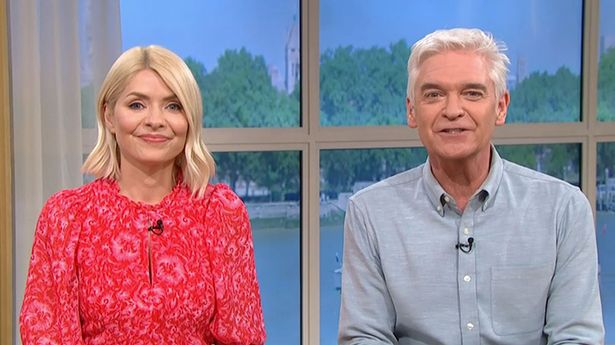Artist Eva Nielsen’s hybrid approach merges photography, painting and collage in “Insolare”
“As sensitive human beings, when we walk through landscapes, it is a procession that is always moving and changing. I love this question of mutation of the view,” says the artist Eva Nielsen as she guides me through her gorgeous, textural, otherworldly installation “Insolare.” Created alongside the curator and her longtime collaborator Marianne Derrien, it explores the impact of human activity on nature. It’s also a very physical installation, performative in that the viewer is tasked to immerse themselves within these collection of artworks, walk between them, observe the various layers, and absorb the less visible marks—the unseen. “There is something ephemeral when you walk through these pieces. Look,” she says as we peek through one of the semi-transparent artworks, “each layer and each structure are in discussion with the other.”
Installing “Insolare,” by Eva Nielsen and Marianne Derrien, with these modular frames instrumental … [+]
“Insolare” is the latest edition of BMW Art Makers, an annual program by the carmaker initiated to support an artist-curator duo in creating an experimental project in the visual arts. On exhibition in Grand Palais Éphémère at the Paris Photo fair (November 10-13, 2023), the 12 artworks on display were selected from some 3,000 photographs taken by Nielsen on location in Camargue, the coastal region in southern France between the Mediterranean and the Rhône river delta. In her studio in Paris, Nielsen then added textures and layers with paint, topographic imagery and silkscreen, collage and textiles for fragmented visions of the nature she captured in Camargue.
The large-scale images hang within reusable and recyclable modules, encouraging each artwork to respond to the other and converse with the general photographs on display within the surrounding booths at Paris Photo. As we meander through “Insolare,” Nielsen says this artwork dialogue is fundamental to how she wants the work to be experienced. Scenography, staging different environments and atmospheres, and the modularity of these frames are critical to her interpretation of nature—one that is moving, ever-evolving, and open to change.
At Paris Photo “Insolare” is designed to be in conversation with the surrounding artwork and viewers … [+]
Camargue was chosen instinctively. “When I visited the region, I felt like I was in one of Eva’s landscapes,” muses the curator and collaborator Derrien, who has known Nielsen since they were both studying at École des Beaux-Arts de Paris. Camargue, a landscape in flux, known for its beauty but also an industrial history, speaks to Nielsen’s interest in the transitions between rural and industrial and social and political landscapes. The artist says she was drawn to its “shifting landscape” where the sea and the land almost merge. Derrien adds: “You could say it’s a place with a double tragedy, with its extremely wet and dry landscapes. It is weird and ambiguous. Eva’s artwork offers many points of view. The territory was, therefore, ideal for this project.”
Eva Nielsen’s processes are hybrid, with textural images full of movement and intrigue.
“I want to push the boundaries of the image,” Nielsen tells me as she goes through her hybrid processes. She painted over a photograph in one artwork and then directed her camera lens through a mosquito net. Another is printed on latex and transparent fabrics that tease the viewer into looking beyond what is visible. Nielsen also mixes old family album snapshots with photography taken on location in Camargue to explore how our minds often reflect images and ideas from the past and future onto what we see before us. She says, “We’re not sure what’s in front and what’s behind. I like the sense of ambiguity that comes with that.”
Eva Nielsen works with various textures and layers, here directing her lens through netting, to … [+]
Her work also challenges concepts of masculinity and femininity as she weaves cartography and landscape art—traditionally seen as masculine work—with craft and textiles, both of which are historically considered feminine pursuits. “I’m sensitive to how women interact with their eyes and bodies with the question of the landscape and how this is linked to our bodies of what we can and cannot do. It is often a political question.” She refers to ecofeminism and other ways of viewing and presenting landscapes. “As women, we are more hybrid, liquid, aware of many possible stories.”
Eva Nielsen with “Insolare” at Paris Photo
Ultimately, Nielsen and Derrien’s work invites multiple narratives, encouraging us to see beyond the surface image. It acknowledges that, like life, a landscape is not static but rather continuously shifting, shaping, and moving. I’m reminded of the sunset, a glorious vision that can never truly be captured on camera—no matter how hard most of us have tried. Poetry, I offer, of all the art forms, can best paint something so ephemeral.
Nielsen nods in agreement, confessing that she was raised within a landscape of poetry as her mother is a literary translator. “We have a lot of discussions about movement of the mind,” she says. “I have a deep respect for the viewer. They are the key to the story: the viewer fills the blank space with their mind and fantasy. I dislike artworks that are too authoritarian. There are multiple stories in everything and multiple points of view, and keeping this open mind is more important now than ever.”
“Insolare” was first shown in Rencontres d’Arles in July, followed by Paris Photo in November, with Eva Nielsen’s artwork now traveling to Galerie Peter Kilchmann in Zurich.
Read about artist and filmmaker Shirin Neshat’s politically charged “The Fury,” photographer Kyle Weeks at David Hill Gallery, and filmmaker Steve McQueen’s moving film installation “Grenfell.”



